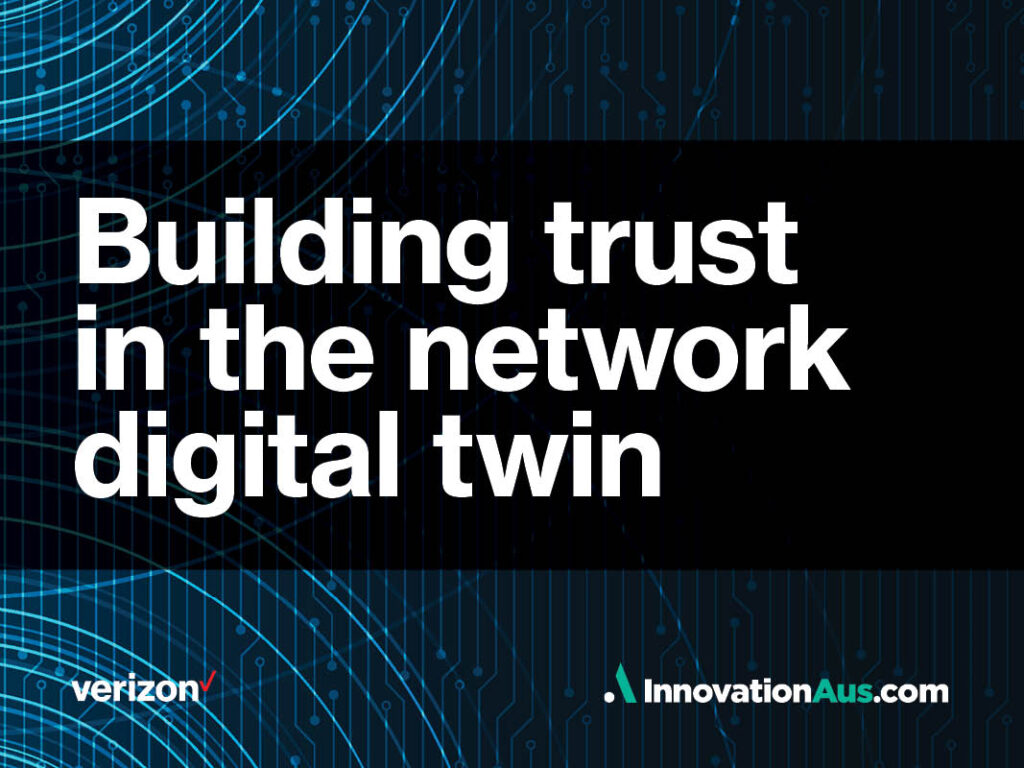Mastering digital twin innovation requires embracing failure, a lesson that industry and government are learning from the defence sector.
The insights from an InnovationAus.com roundtable and whitepaper sponsored by Verizon, Building trust in the network digital twin, highlight how these virtual models of real-world objects or systems simulate and test everything from military strategies to air traffic control and healthcare processes.
For instance, building a warship during a pandemic demands a high degree of problem-solving with high stakes and complexities.
Using digital twins to create virtual replicas of warships allowed engineers and designers to test and refine designs, manage resources, and ensure project continuity despite massive logistical supply chain issues.
An Australian air traffic company also used digital twin technology to manage staff and planes, successfully optimising operations with lower real-time human stress and costs. Such innovations, supported by machine learning, hold immense potential for dynamic and complex industries, including healthcare.
However, the challenge of securing interconnectivity and sharing data in these environments hinges on accepting the inherent risks and complexities of digital integration. Strong cybersecurity measures are crucial as digital twins create a bridge between the physical and virtual worlds. This is particularly true for organisations in the healthcare sector like Medhealth and Eastern Health, where patient data privacy is as vital as operational efficiency.
“Data security wasn’t a big concern thirty years ago. Now, every day, customers call me about keeping their APIs safe,” Verizon’s enterprise and government client partner and roundtable speaker, Sylvia Souliotis, said.
Further, fusing data reporting and analytics with security and privacy inside virtual simulations is a particular healthcare concern, agrees Sharon Wilkes, senior enterprise risk manager at the Transport Accident Commission. While possible, it requires pioneering a federated system that balances customer expectations and service with security concerns around data.
Digital twin technology, argues the whitepaper, leads to cheaper, faster, and more accurate decisions across nearly every industry. This is echoed by various companies contributing to the roundtable, including H&R Block and Maurice Blackburn Lawyers.
State-specific players like Digital Twin Victoria, with its significant $37.4 million investment in the technology, also highlight its broad impact.
Global technology company Willow is establishing high degrees of trust with its digital twin offering around building sensors. “The biggest challenge we face today has nothing to do with technology,” says Willow’s New Build director, Daniel Kalnins. “Rather, it’s getting the human users of digital twins, who certainly understand the problem, to trust a wholly technological solution.”
Duncan Fletcher, STaR Shot deputy leader at Defence Science Technology Group (DSTG), adds “Humans are significantly better at applying intuition to do clever, unexpected things.”
The whitepaper urges Australian stakeholders to culturally adapt to the incoming digital twin disruption. “These digital twin models can only be as effective as those using them,” cautions Bonnie Shaw, co-founder and chief impact officer of Place Intelligence.
“It’s not only about having the latest technology but also about having a culture that understands and values what these tools can do.”
This struggle intensifies with growing misinformation across social media and daily communication channels. “How do we manage it within very complex environments with multiple data points, in a way that is not counterproductive?” questions Damien Manuel, general manager of open data regulation at PEXA.
Despite these concerns, there’s a lesson to be learned from the defence sector about embracing digital twins for innovation. While engineers might see limited value in using digital twins for planning in the built environment, the defence sector demonstrates a broader, braver vision.
It extensively applies digital twins to strategic planning, such as simulating an entire city’s infrastructure, including plumbing, ICT, and public amenities. This approach enables preparation for various scenarios, from natural disasters to urban development. Consequently, advantages unfold, including the ability to model different scenarios and their impacts, like floods, fires or other black swan events.
However, alongside these benefits, there’s a crucial need to secure this information. Protecting these digital models from misuse and manipulation is essential, ensuring they serve their intended purpose without compromising security.
The whitepaper is ultimately a call to action for the federal government to leapfrog the traditional ‘failsafe’ mindset and enable cross-sector learning around networked digital twins, typical of the US.
“You can’t build muscle by watching someone else lift weights,” Ms Shaw said, succinctly capturing the risk and opportunity for public policy servants.
This roundtable and whitepaper were produced by InnovationAus.com in partnership with Verizon.
Do you know more? Contact James Riley via Email.

